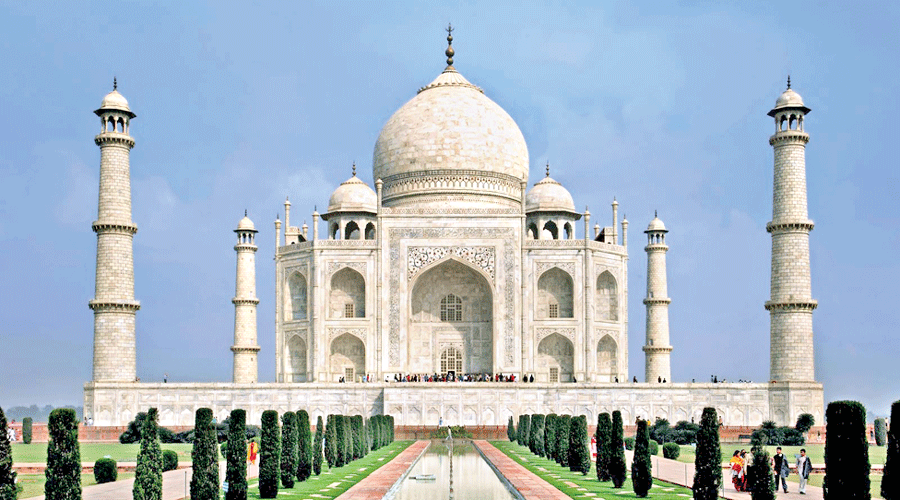The Lucknow bench of Allahabad High Court on Thursday threw out a petition that sought to prove the Taj Mahal was built after demolishing a Hindu temple, asking the petitioner not to “make a mockery” of the public interest litigation system.
Petitioner Rajneesh Singh, who said he was the Ayodhya BJP unit’s media-in-charge, had sought a directive to open what he claimed were 22 locked underground rooms in the Taj Mahal that purportedly contained idols of Hindu gods and goddesses.
“Go and do an MA in history and then select this subject for your research after clearing (the entrance test for) JRF (Junior Research Fellowship). Come back to us if any institution denies you permission to research this subject,” the bench of Justices Devendra Kumar Upadhyaya and Subhash Vidyarthi told Rajneesh, a dentist.
Thursday’s ruling comes at a time petitions pending in various courts are seeking to prove that this or that Islamic structure — such as the Gyanvapi mosque in Varanasi and the Idgah in Mathura — was built by pulling down temples. A plea about the Taj, similar to Rajneesh’s, is pending before an Agra court.
“Allow me to see what is there in those rooms of the Taj Mahal,” Rajneesh’s lawyer had told the bench, seeking a directive to the Archaeological Survey of India (ASI) to open the “underground rooms”.
The bench shot back: “Tomorrow, you can say that you want to enter the chamber of the honourable judges.... Don’t make a mockery of the PIL system.”
The court said the petition had been filed merely to grab media attention and that it didn’t find any merit in this “non-judicial issue”.
Rajneesh had claimed the central government had informed him, following an RTI query, that the Taj had 22 locked rooms.
He had cited the late author P.N. Oak to claim that Mughal emperor Shah Jahan had built the 17th-century Taj Mahal after demolishing a Shiva temple, the Tejo Mahalya, built by a Hindu king in 1212.
The ASI, the custodian of the Taj, had told an Agra court in 2017 that there was no evidence that a temple ever existed at the site of the Mughal mausoleum.
In the year 2000, the Supreme Court had dismissed a petition from Oak seeking a declaration that the Taj was originally a Hindu temple.












